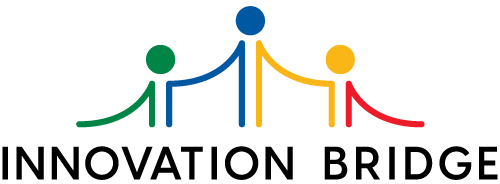Mapp
South Africa
Overview of innovation
Our innovation is a GIS-enabled digital platform that brings data from different sources onto one platform and visualises the insights based on patterns and relationships due to spatial relationships with interactive maps, dashboards which can be accessed via desktop and mobile applications configured according to user needs. This is achieved by:
1. Providing a central point of contact for common stakeholders desiring information or insights
2. Improving GIS data quality by the shared use and maintenance of commonly used data
3. Providing a common presentation of geospatial information in the form of web services (e.g. Maps, features, dashboards, applications)
4. Presenting observed patterns and relationships in visuals that suit the user
It was originally intended for mine companies to track COVID-19 infections across the industry, within their own operations, wards/municipalities/districts/provinces but later evolved into a risk assessment, monitoring and surge preparedness tool as well, identifying at-risk populations for specific interventions appropriate for the identified group of people/area to curb infections of workers in the community and thus decreasing infection ultimately in the mining workforce.
The application is adaptable for any type of user depending on their identified needs and access profile. So the user can be any citizen who can publicly access the platform to see infection trends in their area, assess their potential risk for infection and high mortality rates and even report a high-risk gathering in real-time.
Government officials can use the mobility tools to assess if people are adhering to stay at home protocols, which places are seeing a lot of traffic and thus inform when to switch to an appropriate alert level. They can also map out places such as places of worship, schools, health facilities, train stations, retail outlets to target them for health promotion as they tend to be superspreader points.
Hospitals and labs can use it to estimate how many beds will be needed and thus prepare field hospitals appropriately, track infection, recovery, comorbidities, deaths and other indicators across the country to be appropriately staffed and prepared. This can also be used to coordinate efforts between health facilities to ensure none are overcrowded or underused, so useful in distributing resources across each other by tracking patient admissions and sharing the patient load evenly within a specific region.
Using the demographic indicators such as 60+ clusters of people, areas with high poverty rates, areas with lack of access to running water and sanitation to predict where assistance can be directed even before people become sick.
1. Providing a central point of contact for common stakeholders desiring information or insights
2. Improving GIS data quality by the shared use and maintenance of commonly used data
3. Providing a common presentation of geospatial information in the form of web services (e.g. Maps, features, dashboards, applications)
4. Presenting observed patterns and relationships in visuals that suit the user
It was originally intended for mine companies to track COVID-19 infections across the industry, within their own operations, wards/municipalities/districts/provinces but later evolved into a risk assessment, monitoring and surge preparedness tool as well, identifying at-risk populations for specific interventions appropriate for the identified group of people/area to curb infections of workers in the community and thus decreasing infection ultimately in the mining workforce.
The application is adaptable for any type of user depending on their identified needs and access profile. So the user can be any citizen who can publicly access the platform to see infection trends in their area, assess their potential risk for infection and high mortality rates and even report a high-risk gathering in real-time.
Government officials can use the mobility tools to assess if people are adhering to stay at home protocols, which places are seeing a lot of traffic and thus inform when to switch to an appropriate alert level. They can also map out places such as places of worship, schools, health facilities, train stations, retail outlets to target them for health promotion as they tend to be superspreader points.
Hospitals and labs can use it to estimate how many beds will be needed and thus prepare field hospitals appropriately, track infection, recovery, comorbidities, deaths and other indicators across the country to be appropriately staffed and prepared. This can also be used to coordinate efforts between health facilities to ensure none are overcrowded or underused, so useful in distributing resources across each other by tracking patient admissions and sharing the patient load evenly within a specific region.
Using the demographic indicators such as 60+ clusters of people, areas with high poverty rates, areas with lack of access to running water and sanitation to predict where assistance can be directed even before people become sick.
Name of Developer
Nandi Mtethwa
Primary Organisation
The Research Institute for Innovation and Sustainability
Was this innovation co-created?
No
Innovation Area/Category
Digital Tool
Surveillance
Technology Readiness Level
TRL 7 – Refined prototype created
Intellectual Property
No
Opportunity Type
Collaboration
Funding
Sales

